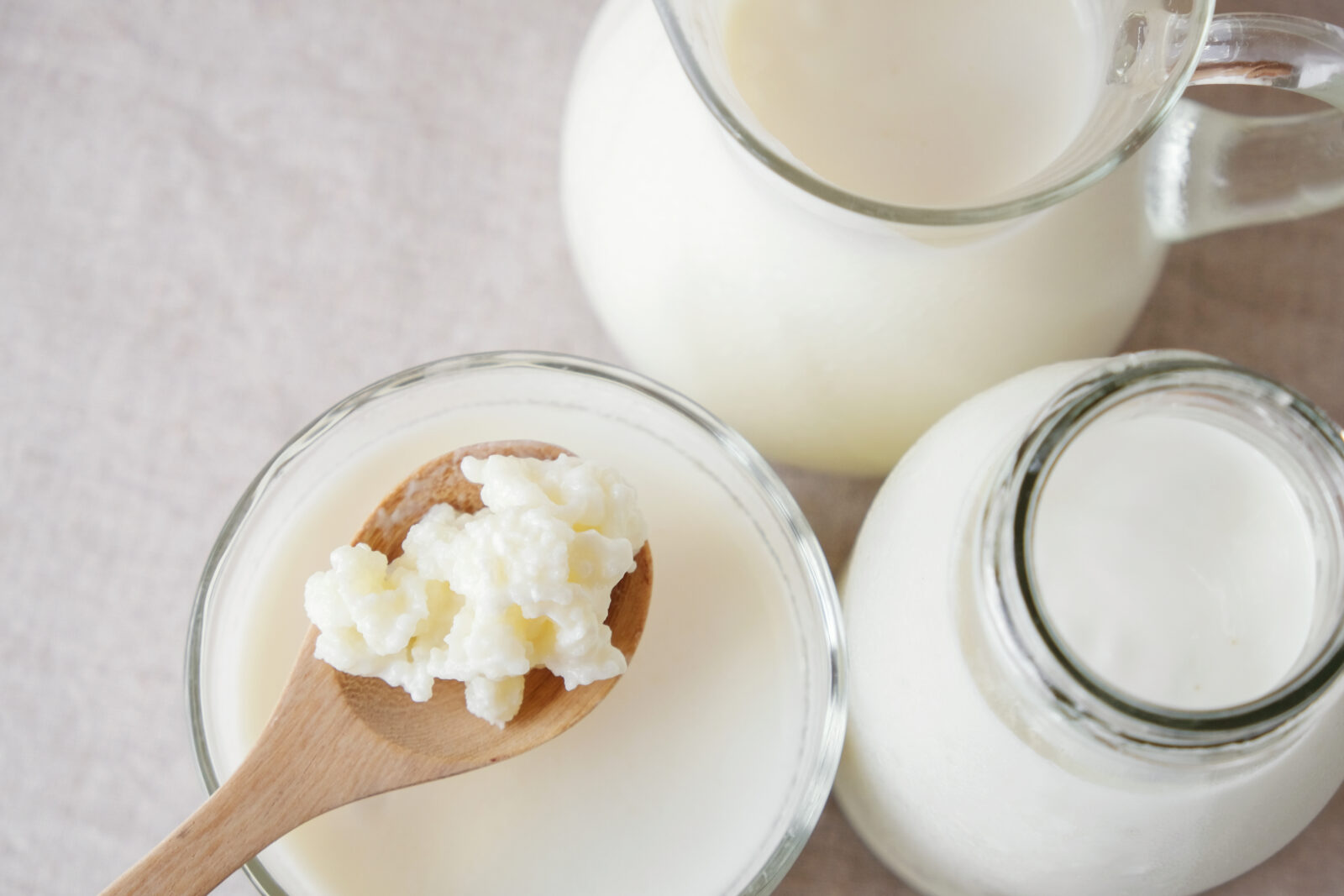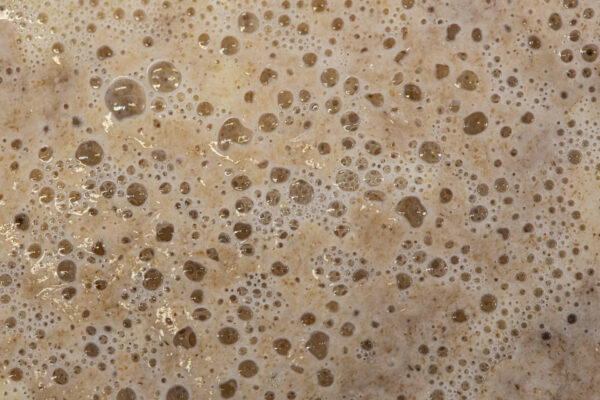No Microorganisms, No Fermented Foods
To ferment any type of food, you need some very special help from something you cannot even see called microorganisms.
Fermentation is a natural process carried out by enzymes of microorganisms that can transform different kinds of raw foods. Fermentation is activated by microorganisms such as bacteria or fungi (yeast) most often in the absence of oxygen to convert carbs, such as starch and sugar into alcohol and acids.
Learn about the father of fermentation Louis Pasteur
During the fermentation process, microorganisms modify carbohydrates into a variety of metabolic by-products. These compounds give fermented products a distinctive taste, flavor, texture, and the ability to last longer. Lacto-fermentation is one of the most conventional forms and relies on specific bacteria (Lactobacillus genus) as well as yeasts.(2)
Fermentation not only helps to preserve foods, but it can also make food more nutritious and even more appetizing for those foods made from less desired ingredients. The microorganisms responsible for fermentation also often produce vitamins as they ferment. This means that the end product of fermentation is also often more nutritious than the original ingredients that were used to make it!
Learn more about yeast’s role in fermentation
Let’s have a look at some of the main types of fermented foods!
Fermented Vegetables
Fermenting vegetables may seem like something new, but it is actually very old. Before the invention of the refrigerator and sterilization techniques, fermentation was the only way to preserve vegetables.
Today, fermented vegetables have become very popular, due to their distinctive flavor profiles and their wide range of uses in cooking. Any vegetables that can be eaten raw can be fermented. Additionally, today, the nutritional value of fermented vegetables is recognized.
When vegetables are fermented, they acidify. Good bacteria, supported by salt and the absence of air, convert the sugar that is naturally present in vegetables into lactic acid. These good bacteria cancel out the bad bacteria and begin to break down the fibers in fruits and vegetables. This leads to fermented vegetables that are crunchy and tangy and have a wide variety of health benefits.(3)
Vegetable fermentation can be achieved in two ways:
- In brine (salt diluted in water). This is best for vegetables that do not contain much water already, for example, carrots, cucumbers, olives, and paprika.
- Just in salt without water. This way is best for vegetables that already have a high quantity of water, such as cabbage and fennel.
One of the best parts about fermenting vegetables at home is that depending on your taste you can choose to let them ferment for a shorter or longer time depending on how tangy you want them to be. Additionally, you can add various spices, such as chili, pepper, dill, or any other spices to give your fermented vegetables a truly unique flavor.
When it comes to fermented vegetables, the only limit is your imagination!
Some notable fermented vegetables include kimchi, sauerkraut, olives, and pickles.
Fermented Meat and Fish
Fermented meats and the first techniques used to ferment them go back nearly three million years!(4)
Early meat fermentation techniques essentially meant hanging the meat from your cave ceiling. This was necessary as without this the meat was too chewy and difficult to eat. So, a certain amount of tenderization was necessary. While our ancestors did not have fire and the ability to cook their food as we do today, fermented meats continue to be popular because they can enhance the flavor and texture of the meat or fish and can also have other health benefits.
Similar to fermenting vegetables the process which is used to ferment meat and fish is the same. Salt is added which produces lactic fermentation, which, dries out the meat or fish and gives it a distinctive flavor. The salt produces a large number of lactic acid bacteria to grow. These good bacteria prevent other less favorable bacteria from growing.
Examples of fermented meats are salmon gravlax, dried duck, chorizo, salami, pepperoni, and “saucisson.”
Fermented Dairy Products
Today, you can easily buy yogurt and cheese in the supermarket, but in the past, these fermented dairy products were made at home, and some people still do. Milk ferments as a result of two main bacteria:
- Lactobacillus bulgaricus
- Streptococcus thermophilus.
These two types of bacteria feed on the sugars present in milk products to produce lactic acid. This lactic acid in turn destabilizes caseins, the proteins in milk, which hardens. The end products are fermented milk products.
In the case of kefir, it is produced by adding kefir grains, which are a mixture of yeast and bacteria, to milk. This result is a tangy beverage similar to yogurt.
Labne from Syria and Lebanon, all kinds of cheeses, kefir, lassi, and ayran are all examples of fermented dairy products.
Fermented Bread and Dough
Before bread, there were pancakes.
Did you know that pancakes are the direct culinary descendants of a dish widely consumed in the Neolithic era, some 4,000 years ago?(5)
You may or may not also know that crepes and blinis in addition to pancakes are also fermented foods.
In crepes and pancake recipes, it will often have a step that involves letting the batter rest, what this essentially means is ferment. Fermentation starts the moment you mix flour with milk. Microorganisms begin to produce carbon dioxide, which makes the batter lighter and fluffier. The longer you let your batter rest the longer you let the microorganisms provide your batter with extra flavor (overnight is ideal).
Learn more about yeast and bread
Fermented Sauces
Sauces like ketchup and hot sauces are made with vegetables, for example, tomatoes or chilies. So, it is no surprise that the lactic fermentation we discussed concerning vegetable fermentation also applies to these sauces. Lactic fermentation functions with lactic bacteria, which feeds on the sugars present in the vegetables and produces lactic acid. In the case of these sauces and the sugars in them, all you have to do is ferment them in brine or supply them with different fermenting agents and you will get a tasty, fermented sauce, like hot sauce! These sauces like any fermented food are full of microorganisms and therefore also may have certain health benefits.
Fermented foods are all around us and have been utilized and enjoyed since humanity began. Not only do fermented foods last longer, but they can enhance the flavor of the ingredients as well as provide many health benefits.(6)
We encourage you to go out and explore the wonderful world of fermented foods!
If you like fermented foods, you will love fermented beverages, learn more!



